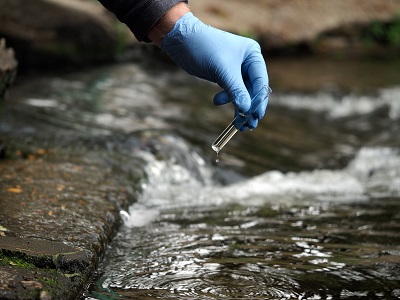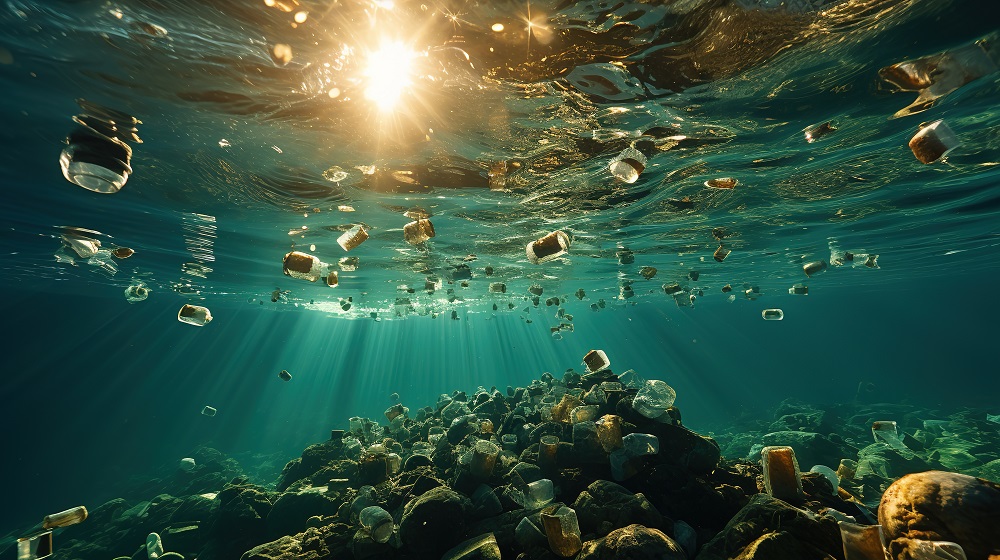A reform of Europe’s chemical regulatory framework, known as REACH, has been delayed by a year, causing consternation about the European Union’s progress on controlling and harmful chemicals impacting human and environmental health. This effectively means that the reform will not be completed during the current European Commission’s term.
The delay to the revisions, which are intended to make REACH faster to act and have more comprehensive coverage, are the result of the Ukraine war, which is taking a huge toll on the chemicals industry. But advocates for reform stress the importance of the revisions to strengthen a decent but imperfect system.

Evidence about the impact of chemicals on human, environmental and ocean health is mounting. Synthetic chemicals are in our food, furniture, toys, clothes, cosmetics and medicine, and demand is showing no sign of ceasing. Global chemicals manufacturing is increasing by 3.5% annually and expected to double by 2030. At the same time, deaths due to chemicals and pollutants have grown by over 66% since 2000—a figure that is likely an underestimate, since only a fraction of the thousands of manufactured synthetic chemicals have been properly tested for safety and toxicity, leaving their effect on human health and the environment unquantifiable. Some estimates place chemicals as responsible for about 6% of the world’s disease burden and 8% of all deaths.
Human health is damaged in myriad ways, including endocrine disruption. This affects the production and regulation of hormones, leading to a cell’s normal response being initiated at the wrong time or to an excessive extent. In this case, it stops the correct activity of the cell by preventing the hormones from binding to their receptors, interfering with the metabolic processes in the body by affecting the synthesis and breakdown of natural hormones.
“We’re talking about a situation where pollution kills more people than malaria, tuberculosis and AIDS combined three times over. It’s exposure to compounds that are interfering with biology,” says Professor John Colbourne, chair of environmental genomics at the University of Birmingham. As outlined in Invisible Wave, the impact of chemical pollution on our oceans is serious, from the loss of marine biodiversity to acidification. Frameworks like REACH are critical to overcoming this crisis.
Europe’s leadership
REACH was a pioneering regulation to protect human health and the environment from the risks posed by all chemical substances. The initiative dates to the early 2000s, becoming fully operational in 2008. Surprisingly, prior to REACH, the industry had not been required to check that chemicals placed on the market before 1981 were safe prior to use and discharge.
REACH was a game-changer in forcing the industry to account for how many synthetic chemicals existed—the number is, surprisingly, uncertain—and placed an obligation on industry to provide accessible data. “The idea of REACH was to create one system for all new and existing chemicals with a phasing period to gather data on existing chemicals,” explains Dr Michael Warhurst, executive director of CHEM Trust, a UK-based charity. However, there was a dearth of data to inform how REACH deals with already existing chemicals.

“Prior to its implementation, new chemicals needed to provide safety paperwork, while everything else was viewed as existing without an obligation to deliver enough information about existing chemicals,” explains Dr Warhurst. “Now with REACH we do know about chemicals produced at over one tonne per annum in the EU and we have some data on them, but the data is generally of very poor quality, and there are too many opportunities for delay in the regulation process.”
REACH failed to prevent the rising prevalence of PFAS, according to Dr Warhurst. PFAS stands for per- and polyfluorinated alkyl substances and represents a family of over 4,700 man-made chemicals. Since their introduction in the late 1940s, PFAS have been used in an increasingly wide range of consumer products thanks to their carbon-fluorine bond, which results in their high stability and resistance to high temperatures.
“Prior to its implementation, new chemicals needed to provide safety paperwork, while everything else was viewed as existing without an obligation to deliver enough information about existing chemicals.”
This bond, however, is very strong and responsible for their extreme persistence in the environment. For Dr Warhurst, REACH needs to do a better job of tackling chemicals that are “persistent and mobile”. This is also the most relevant category for protecting the oceans, as such pollutants can pass natural barriers like riverbanks and artificial barriers such as water treatment facilities.
Under the current REACH, registrants do not need to provide information related to mobility in the environment, which can pose a threat to drinking water resources. “There is a lot of focus on chemicals that accumulate in the body [in the current REACH], but we’re talking less about the forever chemicals in environment. The PFAS group has made it very clear that we need to control that,” says Dr Warhurst.
The draft legislation revising the framework, dubbed REACH 2.0, was originally slated for 2022 but this could now stretch into 2023. Key changes to Europe’s approach are expected to include the addition of polymers, more focus on the combined effects of chemical mixtures, stronger controls on persistent and mobile chemicals, and more financial support for making safe and sustainable chemicals commercial.
The timeline for REACH 2.0 and related reforms is now uncertain, although on October 18th the European Commission confirmed its plan to publish revised legislation in the fourth quarter of 2023. The German chemicals industry has been arguing that the crisis in Ukraine is a reason for the delay, given their heavy commitment to Russian gas, according to Dr Warhurst. One party, the centre-right European People’s Party, has suggested that REACH 2.0 should be shelved due to the strain of rising energy prices and disrupted supply chains owing to the Russia-Ukraine war.
“There is a lot of focus on chemicals that accumulate in the body [in the current REACH], but we're talking less about the forever chemicals in environment. The PFAS group has made it very clear that we need to control that.”
These delays mirror the challenges in the original REACH, which took a decade to pass and was significantly watered down. Attempts to control or limit chemicals use unsurprisingly spark industry opposition. And many companies merely make slight alterations to the compounds affected by legislation to circumvent the restrictions. Any change to REACH could take up to a decade to implement, according to DLA Piper firm.
UK’s REACH: A Brexit dividend?
While the EU REACH revisions remain up in the air, the UK is advancing with its own version and reforming its Chemicals Strategy. CHEM Trust has previously argued that the UK’s approach to hazardous chemicals is significantly weaker than that of the EU, with evidence that the UK’s lead agency, the Health and Safety Executive, passing fewer restrictions on hazardous substances than Europe. The country is also at a disadvantage in terms of its technical capacity and loss of valuable European datasets.

At the same time, Mr Colbourne of the University of Birmingham says the UK might have an opportunity to design a more sophisticated framework rather than rebuild a legacy infrastructure. The Department for Environment, Food and Rural Affairs (Defra), for example, is showing interest in the emerging field of ‘precision toxicology’. Rather than the conventional approach of observing and reviewing toxicity on mammalian non-human systems like mice and rats, precision toxicology harnesses the ‘omics’ sciences, which have emerged since the sequencing of the human genome.
This comprises genomics (the study of genes), transcriptomics (the study of gene products before they become proteins), proteomics (the documentation of all proteins in a cell) and metabolomics (the molecules resulting from the interactions of proteins and other elements in a biochemical process).
They provide insights on what is happening at a biomolecular level. Scientists working within the Precision Tox initiative at the University of Birmingham are currently working with non-sentient animal models such as the fruit fly and water flea, collecting transcriptomics and metabolomics to discover the key events that lead to adversity at the molecular level, says Mr Colbourne.
Dr Warhurst agrees that ‘-omics’ could enable more efficient regulation, such as grouping chemicals in clusters based on mechanistic similarities. “We would like to see more use of grouping. You can see when two chemicals in a group are carcinogens and that makes it likely that other similar chemicals should be regulated as carcinogens. This can be done without animal testing. If you have -omics that might add to your confidence that these chemicals are in the same group as the other one.”
The European Chemical Agency in Helsinki is beginning to group chemicals together using available data to fill knowledge gaps. “It has powerfully shown that there are chemicals that should be classified as carcinogens which aren’t at this moment because there hasn’t been the data,” says Dr Warhurst.
Back to Blue is an initiative of Economist Impact and The Nippon Foundation
Back to Blue explores evidence-based approaches and solutions to the pressing issues faced by the ocean, to restoring ocean health and promoting sustainability. Sign up to our monthly Back to Blue newsletter to keep updated with the latest news, research and events from Back to Blue and Economist Impact.
The Economist Group is a global organisation and operates a strict privacy policy around the world.
Please see our privacy policy here.
THANK YOU
Thank you for your interest in Back to Blue, please feel free to explore our content.
CONTACT THE BACK TO BLUE TEAM
If you would like to co-design the Back to Blue roadmap or have feedback on content, events, editorial or media-related feedback, please fill out the form below. Thank you.
The Economist Group is a global organisation and operates a strict privacy policy around the world.
Please see our privacy policy here.




 World Ocean Summit & Expo
2025
World Ocean Summit & Expo
2025 UNOC
UNOC Sewage and wastewater pollution 101
Sewage and wastewater pollution 101 Slowing
the chemical tide: safeguarding human and ocean health amid
chemical pollution
Slowing
the chemical tide: safeguarding human and ocean health amid
chemical pollution Hazardous chemicals in plastics - the discussions at INC
Hazardous chemicals in plastics - the discussions at INC






















